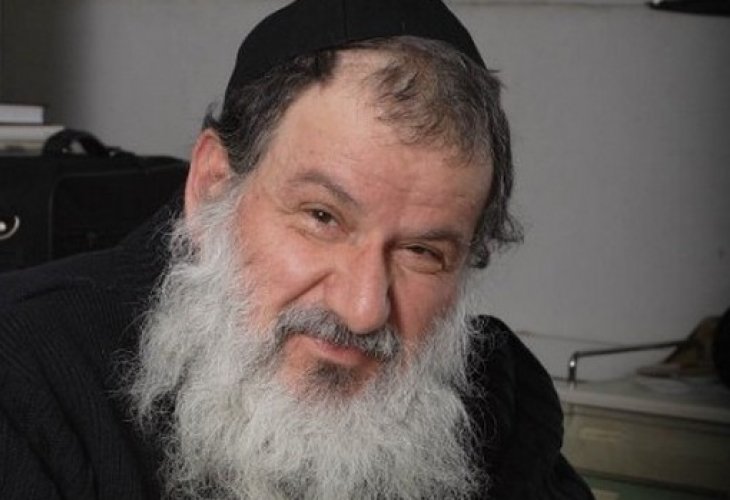Personal Stories
Hashem Returned It to Me in a Big Way
Yoni Gerstein shares how becoming religious deepened his art, his purpose, and his connection to Torah
- Oha (Eliasov) Hakimian
- |Updated

Yoni Gerstein, now 67, is considered one of the leading illustrators in the Haredi world. For over thirty years, he has been creating artwork that blends visual creativity with deep Torah messages. His drawings are beloved not just for their artistry, but for the powerful Jewish values they convey.
He studied at the Academy of Arts in Paris, but his love for drawing began long before that. As a teenager, his work was already being published regularly in Maariv for Youth, one of Israel’s most prominent magazines for young people.
After serving in the army, studying, and spending time abroad, Gerstein settled in Israel and began working in graphic design not out of passion, but because at the time, illustration alone wasn’t enough to support a family. For years he worked in design, until gradually returning to the art that truly lit up his soul. Then, after becoming religious, he left it all behind at least for a while.
For two years, Yoni threw himself fully into Torah study. He was ready to give up art completely. But one conversation changed everything.
“I once visited Rabbi Elazar Menachem Man Shach,” he recalls. “And the rabbi told me I must not abandon my profession. He said I should continue drawing at least a few hours a day.”
That advice was life-changing. Today, the signature “Yoni” on his illustrations appears in Yated Ne’eman, one of the most widely-read newspapers in the Haredi world. His work is also a staple in the popular Delicacies for the Shabbat Table pamphlets that are eagerly picked up in synagogues every weekend.
But Gerstein doesn’t just illustrate, he also develops new educational concepts through his art. One example is his series of illustrated Mishnayot, where he not only creates the images, but also writes the titles and summaries. This requires deep study beforehand.
“Almost everything I draw starts with learning,” he explains. “Whether it’s Gemara (Talmud), Jewish philosophy, or ethics, I have to learn it first.”
How do you balance Torah learning and your work as an artist?
“I learn every morning and evening. I have regular study partners. But for me, drawing is also Torah. There’s Torah lishmah, learning for the sake of learning and then there’s learning that feeds into my work. I often visualize what I’m learning, like how it might look in a drawing. That helps me bring abstract concepts down to earth.”
Thirty years ago, you were far from Jewish life. You probably never imagined illustrating the Tractate Shabbat. What sparked your return to Judaism?
“I became religious around age 38. By then, I was already a successful artist. But I felt something was missing. I had everything but I felt empty. I started looking into different spiritual paths like Eastern teachings, yoga, meditation but none of it felt right. I also explored veganism and vegetarianism, hoping to find meaning there, but it didn’t fulfill me either. Then I met some baalei teshuvah, Jews who had returned to Judaism and their words really touched me. Slowly, I was drawn in.”
And then you gave up drawing entirely?
“Yes, for two full years I immersed myself in Torah study and didn’t think I’d ever return to art.”
So what brought you back?
“Meeting Rabbi Shach. He told me, ‘You must continue. Use your talent.’ That’s when I understood that you can be religious and still use your profession for something holy. People think becoming religious means giving up your career. But that’s not true. You can use your skills to honor the Torah. Look at me, Hashem gave it back to me in a big way. You don’t lose when you come close to Hashem. You gain.”
When you face a blank sheet of paper, what goes through your mind?
“There are different types of drawings, but the hardest ones are conceptual, when I need to tell a full story with just one image. I’ll focus on the main message and jot it down on the side of the page. Then I run many ideas through my mind, which sometimes takes hours. Eventually something clicks, and I know I’ve found the right direction. From there, the drawing begins.”
Your art carries strong educational messages. Is that your goal?
“Absolutely. My drawings are tools to help children learn and Torah scholars too. My whole goal is to help teach through art. My illustrations are used in Torah schools, public schools, and seminaries.”
If you weren’t an artist, what do you think you would have done instead?
“Probably writing. I love expressing ideas and telling stories. Even as a child, I was a bit dramatic, I’d act out scenes and entertain people.”
You’ve accomplished a lot over the past thirty years. Are there still goals you’re reaching for?
“Endless ones! I still feel young, Baruch Hashem, and full of ideas. I want to develop new projects and grow this field. I’m training others so that Jewish illustration can continue to flourish. Right now, one of my biggest goals is to illustrate all five books of the Torah, at least the key stories.”
Yoni Gerstein lives in Bnei Brak. He’s the father of eight and the grandfather of over fifteen grandchildren. His story is a living example of how embracing Torah doesn’t mean giving up who you are, it can actually help you become the person you were always meant to be.

